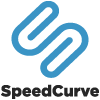Schedule: High-level sessions
1:30pm–5:00pm Tuesday, June 12, 2018
 Benjamin Hong (Politico)
Benjamin Hong (Politico)
Average rating:





(3.43, 7 ratings)
When it comes to learning about a new framework, there's no better way than building things from scratch. Join Benjamin Hong for a hands-on deep dive into Vue.js. You'll start from a bare-bones HTML5 template and build three applications from the ground up. Along the way, you'll explore Vue.js key concepts and learn how it compares to other frameworks like Angular and React.
Read more.
9:50am–10:30am Wednesday, June 13, 2018
Average rating:





(4.00, 5 ratings)
Modern backend architectures increasingly stitch together loosely coupled services through event-driven pipelines. Thomas Bouldin and Sarah Allen explain how “stackless” programming can free you to build applications faster that scale more smoothly.
Read more.
11:00am–11:40am Wednesday, June 13, 2018
 annie lau (Trulia)
annie lau (Trulia)
Average rating:





(4.88, 8 ratings)
They say great software is secure software. But who should be responsible for ensuring and maintaining security excellence? Home and neighborhood resource Trulia says, "Everyone." Annie Lau explains how Trulia manages vulnerabilities through its bug bounty program and scales the responsibility of security across engineering, product, and business teams.
Read more.
3:35pm–4:15pm Wednesday, June 13, 2018
 Bradley Holt (IBM)
Bradley Holt (IBM)
Average rating:





(4.20, 5 ratings)
Bradley Holt demonstrates how service workers, Apache CouchDB (an open source document database), Hoodie (an open source Node.js backend for offline first apps), and PouchDB (an open source JavaScript database that syncs) can be used to build progressive web apps using an offline-first approach in order to provide fast, zero-latency access to content and data stored directly on the device.
Read more.
4:25pm–5:05pm Wednesday, June 13, 2018
 Sarah Federman (Adobe)
Sarah Federman (Adobe)
Average rating:





(3.00, 1 rating)
In a perfect world, every application would be usable by everyone. Unfortunately, it never seems to be that simple. Accessibility is vital to the future of the web, and we all have a part to play. Sarah Federman shares techniques for making accessibility a priority in your org through both top-down and grassroots efforts.
Read more.
4:25pm–5:05pm Wednesday, June 13, 2018
 Natalie Qabazard (Trulia)
Natalie Qabazard (Trulia)
Average rating:





(5.00, 5 ratings)
For years, developers have relied on browsers to render web pages client side, which often leaves users patiently waiting for web pages to load. This less-than-favorable experience can be changed by writing user interface components in React. Join Natalie Qabazard to explore the pros and cons of rendering a web page server side using React and a serverless resource.
Read more.
9:00am–9:40am Thursday, June 14, 2018
 C J Silverio (npm)
C J Silverio (npm)
Average rating:





(4.44, 9 ratings)
Until now, JavaScript has not had an official module system defined as part of the language, although it has had several unofficial ones, including Node.js’s CommonJS module system. Join CJ Silverio to explore JavaScript's new module system, ES modules, and learn how your tooling and workflows will need to change in response.
Read more.
9:50am–10:30am Thursday, June 14, 2018
 Tracy Lee (This Dot)
Tracy Lee (This Dot)
Average rating:





(2.36, 11 ratings)
Wouldn't it be amazing if you could copy 90% of code between frameworks? You can with reactive programming. Not only can it ameliorate JavaScript fatigue, but concepts remain consistent across frameworks. Learn how to create composable app architecture with RxJS, a DSL on top of JavaScript.
Read more.
11:00am–11:40am Thursday, June 14, 2018
Average rating:





(4.33, 3 ratings)
The need to work faster and iterate quickly is pressuring teams to connect designers and developers more closely. Val Head and Elaine Chao draw on real-world project experience to demonstrate how the tools you use and the way you communicate can help your teams work more efficiently. You’ll learn how to streamline your process at the critical stage of passing solutions from design to development.
Read more.
4:25pm–5:05pm Thursday, June 14, 2018
 Mark Zeman (SpeedCurve)
Mark Zeman (SpeedCurve)
Average rating:





(5.00, 4 ratings)
There are a wide variety of web performance metrics, but which ones should you focus on and share across your organization? Mark Zeman explains which performance metrics best represent the user experience and walks you through techniques for improving your UX performance metrics and getting the content that users care about the most in front of them as fast as possible.
Read more.
4:25pm–5:05pm Thursday, June 14, 2018
 Stephen Fluin (Google)
Stephen Fluin (Google)
Average rating:





(5.00, 1 rating)
The Angular platform has come a long way since its first major release in September 2016. Stephen Fluin shares what the Angular team is doing to make the platform smaller, faster, and easier to use and outlines new efforts from the team to help developers take advantage of the modern web, including Angular Elements, server-side rendering with Universal, and more.
Read more.
Gold Sponsors
Silver Sponsors
Innovators
Exhibitors
Supporters
Sponsorship Opportunities
For exhibition and sponsorship opportunities, email fluent@oreilly.com
Partner Opportunities
For information on trade opportunities with O'Reilly conferences, email partners@oreilly.com
Contact Us
View a complete list of Fluent contacts
©2018, O'Reilly Media, Inc. • (800) 889-8969 or (707) 827-7019 • Monday-Friday 7:30am-5pm PT • All trademarks and registered trademarks appearing on oreilly.com are the property of their respective owners. • confreg@oreilly.com





